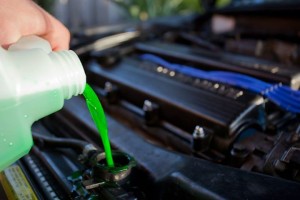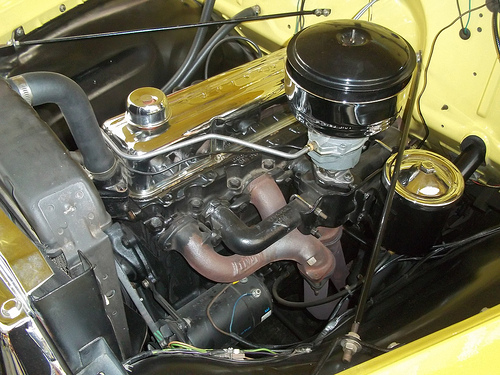What Causes a Car to Overheat When Idling?
Question: Why Would a Car Overheat When Idling?
My car seems to be running fine, but I’m worried that it seems to overheat a little when idling. What happens is that when I’m stopped in traffic, the temperature gauge creeps up. Then when I start driving again, it seems to cool down again. What causes a car to overheat while idling like that, and should I be worried?
Answer:
If you car is overheating at idle, but it’s fine the rest of the time, then there are a handful of different problems that you might be dealing with. The most likely reason for this type of problem is that your fan isn’t working, but the reason, and the fix, will differ depending on the car you drive.
Intermittent overheating problems can also be caused by low coolant, air in the cooling system, a bad coolant temperature sensor, or even a faulty gauge.
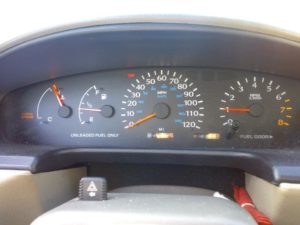
Turning on the A/C or cranking up the heat may help roll back the needle on your temp gauge, depending on your problem. | Image courtesy Harry Heng, via Flickr (Creative Commons 2.0)
What to Do When Your Car Overheats at Idle
Before you proceed, it’s important to remember that some things can’t be checked when the engine is running or right after you shut it off. For instance, never try to check your coolant level when the engine is still hot.
That said, some of the the basic things you can check when your car overheats at idle include:
- The coolant level
- Only check when the engine is cool.
- Low coolant can cause overheating.
- Air bubbles in the cooling system can also cause issues.
- Only use the specified type of antifreeze to top off the system.
- Fan belt problems
- If the fan is driven by a belt, check the belt.
- A loose fan belt can result in overheating.
- If the belt is loose, frayed, or missing, replace it.
- Electric radiator fan problems
- If the fan is electric, check to see if it’s plugged in.
- You may be able to test the fans by turning on your A/C, which often causes the fan to turn on or cycle.
- The fan motor may be burned out, or there could be a problem with the fan switch, a resistor pack, or wiring.
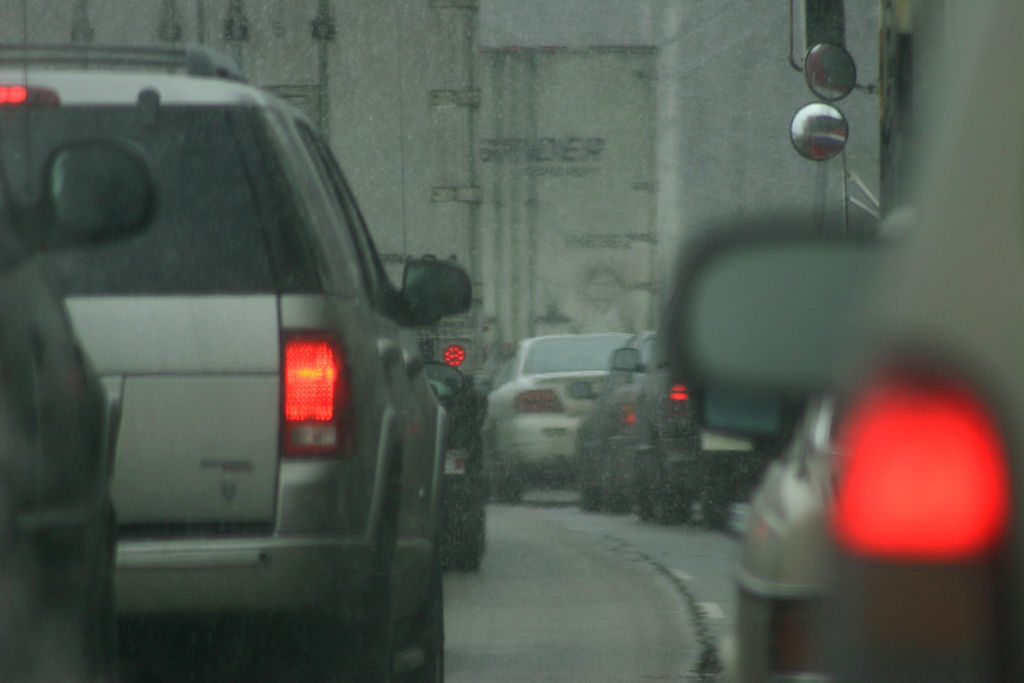
When your car is overheating at idle, the last thing you want is to be stuck in traffic. | Image courtesy Martin Cathrae, via Flickr (Creative Commons 2.0)
Why Would a Car Only Overheat at Idle?
In order to understand why a car might overheat at idle, but be fine when you’re driving down the road, it might be helpful to understand how the cooling system works. Essentially, hot coolant is pumped through your radiator, where heat is exchanged with the air. The coolant is constantly cycled through by the water pump, which allows the engine to run at an appropriate temperature.
When your car is moving, air is forced through the radiator, which helps it extract more heat. Think about what happens when you stick your hand, or your face, out the window of a moving car, and it’s easy to see how this works.
The radiator still works when your car isn’t moving, but it isn’t as efficient. To help things along, a fan forces air through the radiator. Some vehicles use a fan that’s driven by a belt, and others use electric fans, but the principle is always the same.
In any case, you can see that even though the engine isn’t working as hard when you’re idling, it takes more work to dissipate heat when you don’t naturally have air passing through the radiator. So while this type of problem is usually because the fan isn’t doing it’s job, it doesn’t hurt to check easier things like the coolant first.
Checking and Adding Coolant
Overheating an engine can cause catastrophic damage, so it’s important to avoid letting your engine get too hot. If you notice that it gets dangerously hot at idle, then you’ll want to avoid driving in stop and go conditions until you can check things out or take it to a qualified technician.
Once you aren’t stuck in traffic, there are a few things you can check yourself. However, it’s important to let your engine cool down before you go poking around under the hood. It’s especially important to make sure the coolant temperature has dropped far enough for the cooling system to depressurize before you do anything like checking the radiator level.
If the hoses are still especially hot to the touch, or the feel taut when you squeeze them, that’s a hint that popping off the radiator cap could earn you a face full of scalding antifreeze.
When it’s safe to remove your radiator cap, you can do so. If the coolant isn’t all the way to the top of the fill neck, top it off with the appropriate type of antifreeze. It may say which type to use in your owner’s manual or somewhere under the hood, although you can get a pretty good idea by looking at the color of the coolant.
In some cases, the fill point is an overflow bottle instead of the radiator. If your car is like that, you may be able to see whether or not the coolant is full by looking at the side of the bottle, although it’s still important to check when it’s cold. The reason is that coolant expands when it gets hot, so it may look full until it cools down.
Mixing Antifreeze and Water
The last thing to be aware of when dealing with coolant is that it’s actually made up of a mixture of antifreeze and water. The reasoning is that antifreeze is great at not freezing, but it isn’t all that great at transferring heat. So by mixing it with water, you get the benefit of your engine block not cracking mid-winter or overheating mid-drive.
If you, or someone else, replaced your coolant with straight antifreeze, or a very strong mixture of antifreeze, that could potentially cause your overheating problems. Fortunately, an antifreeze hydrometer should only set you back ten bucks or so.
Should you find that your antifreeze mixture is too strong, draining some and adding straight water may help or fix your overheating problem.
Belt-driven Fans and Overheating Problems.
Many cars that have a longitudinal engine use belt-driven fans, which essentially just means that a fan is mounted to a pulley that is driven by an accessory belt. This is easy to see when you open your hood, since you’ll notice a big fan between the engine and radiator that’s connected to the engine.
In some cases, your fan may be bolted straight to a pulley, which means that if your engine is running, the fan is blowing. In other cases, it will be mounted to a fan clutch that is designed to engage only when needed.
The easiest thing to check here is the fan belt. If it’s loose, then tightening it may fix your problem. If the belt is frayed, or even missing, then replacing the belt and tightening it up will almost certainly fix your problem, unless there’s another underlying problem like a misaligned pulley.
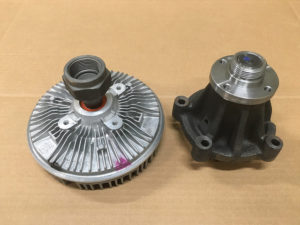
The fan clutch bolts or screws to a fan pulley or the water pump and allows the fan to freewheel or engage. | Image courtesy lw5315us, via Flickr (Creative Commons 2.0)
If your car has a fan clutch, the situation is a little more complicated. It may look like everything is working just fine, but if the fan clutch isn’t engaging when it needs to, that could be the reason that your engine is overheating at idle.
Some fan clutches are electric, and others are thermal. If your car has a thermal fan clutch, you can check to make sure it’s plugged in and that the connector and wires aren’t damaged. If the plug is disconnected, or the wires are damaged, that could be the problem.
Electric Radiator Fans and Overheating Problems
Some vehicles with longitudinal engines, and all vehicles with transverse engines, use electric radiator fans. These fans are mounted on or near the radiator, and they are designed to switch on when airflow through the radiator isn’t sufficient.
It’s pretty easy to tell if your electric radiator fans are working or not if you check when your engine is overheating. If the engine is overheating, and the fan isn’t on, then that’s the problem right there. Either the electric motor in the fan is burned out, or there’s no power getting to the fan for some reason.
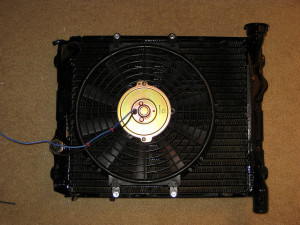
Electric radiator fans are typically bolted to the radiator. | Image courtesy of David Brodbeck, via Flickr (Creative Commons 2.0)
One way that you may be able to test the operation of your radiator fan is to turn on your air conditioning. This will often cause the fan or fans to kick on. If the fan doesn’t turn on, then there’s probably a problem.
The easiest thing to check here is whether or not the fan is plugged in. If it isn’t, or there is any damage to the connector or the wires, that could be the problem. You could also be dealing with a fan switch problem, or even an issue with your car’s onboard computer.
If you have a voltmeter, and you can safely access the fan power connector, you may want to check for power. If the fan has power, and it’s not on, then replacing the fan will be a pretty safe bet.
Temporary Fixes for a Car That Overheats at Idle
If you can’t figure out the problem on your own, then you’ll want to get it checked out before your engine gets damaged. But in the meantime, if you’re stuck in traffic with no escape in sight, you may be able to bring the temperature down temporarily.
In some cases, turning the A/C on may force the electric fans to turn on. This places an additional load on the engine, but forcing the fans to turn on may make up for that.
In other cases, turning on the heat may actually help. The reason is that your heater core is essentially a small radiator that transfers heat inside your car instead of outside. So when you turn on the heat, you’re extracting heat from the coolant. In some cases, it may just be enough to keep your engine from overheating long enough to get to a shop.

